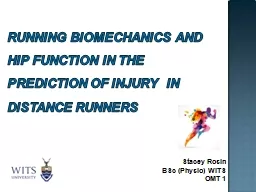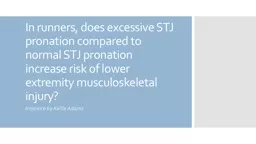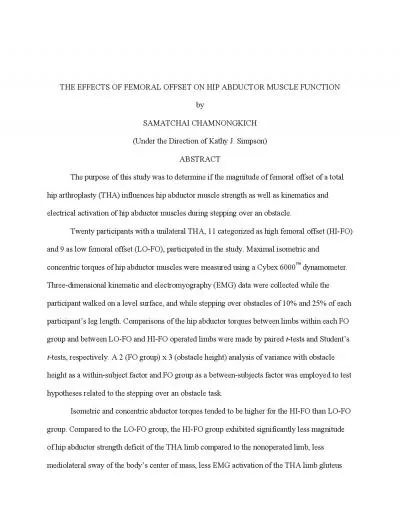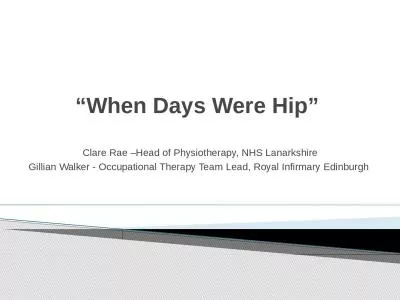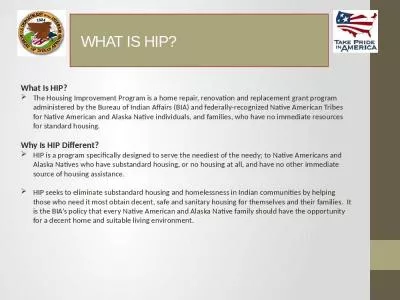PPT-Running biomechanics and hip function in the Prediction of Injury in DISTANCE Runners
Author : yoshiko-marsland | Published Date : 2018-02-17
Stacey Rosin BSc Physio WITS OMT 1 RUNSTUDY2017 The majority of runners are not elite athletes Chorley et al 2002 194 924 of runners injure themselves every
Presentation Embed Code
Download Presentation
Download Presentation The PPT/PDF document "Running biomechanics and hip function in..." is the property of its rightful owner. Permission is granted to download and print the materials on this website for personal, non-commercial use only, and to display it on your personal computer provided you do not modify the materials and that you retain all copyright notices contained in the materials. By downloading content from our website, you accept the terms of this agreement.
Running biomechanics and hip function in the Prediction of Injury in DISTANCE Runners: Transcript
Download Rules Of Document
"Running biomechanics and hip function in the Prediction of Injury in DISTANCE Runners"The content belongs to its owner. You may download and print it for personal use, without modification, and keep all copyright notices. By downloading, you agree to these terms.
Related Documents

